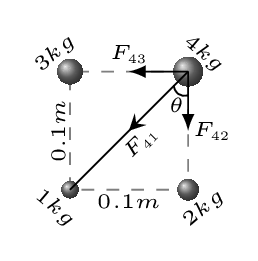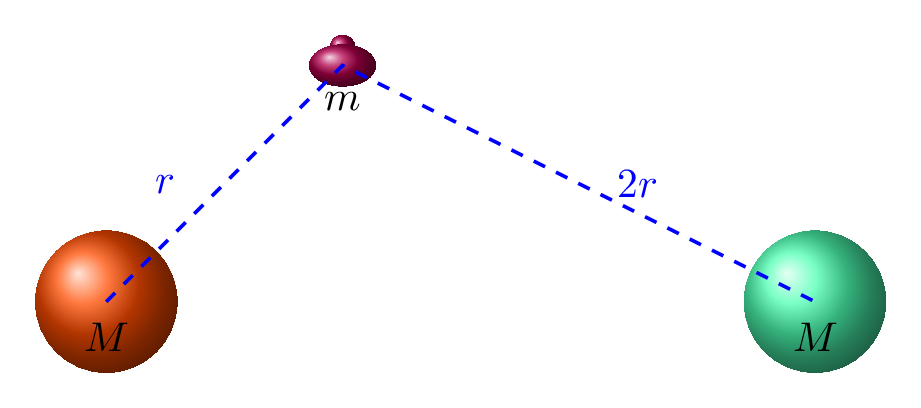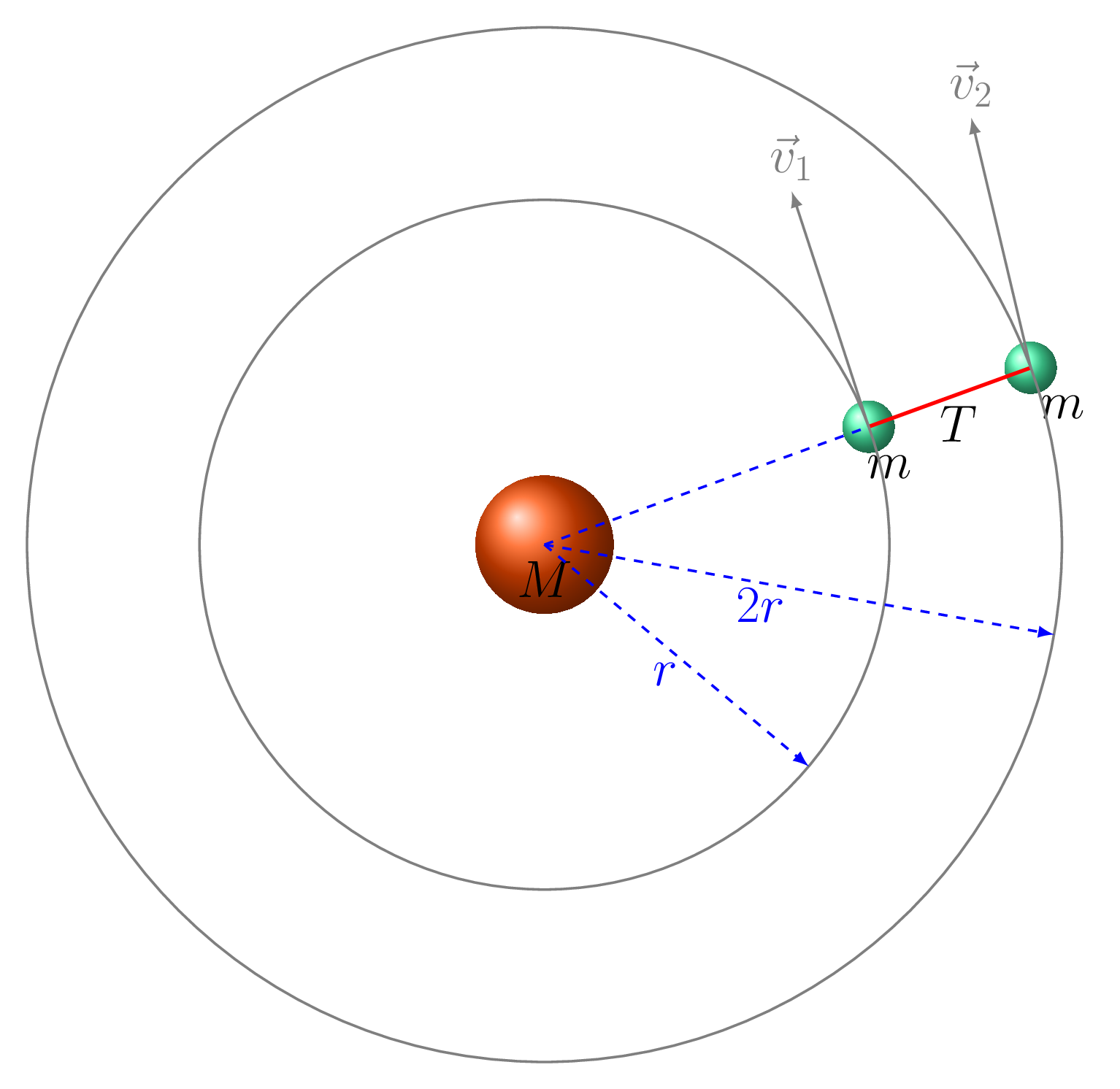Example 6.3.1.
Consider the mass distribution shown at right. What is the magnitude and direction of initial acceleration of the 4 kg mass if all of the masses are released from rest out in space?
Solution.

Given: \(m_{1} = 1 kg, \quad m_{2} = 2 kg, \quad m_{3} = 3 kg,\quad m_{4} = 4 kg, \) \(r_{21} = 0.1 m, \quad r_{31} = 0.1 m, \quad G = 6.67 \times 10^{-11} Nm^{2}/kg^{2}.\)
Equations:
\begin{equation*}
\tan\theta = \frac{0.1}{0.1} \Rightarrow \theta =\tan^{-1}1 =45^{o},
\end{equation*}
\begin{equation*}
r_{41}=\sqrt{0.1^{2}+0.1^{2}}=0.1414m,
\end{equation*}
\begin{equation*}
F_{41} = G \frac{m_{1}m_{4}}{r_{41}^{2}} = G\frac{1 \times 4}{0.02}=(200G) N,
\end{equation*}
\begin{equation*}
F_{42} = G \frac{m_{4}m_{2}}{r_{42}^{2}} = G \frac{2\times4}{0.01}= (800G) N,
\end{equation*}
\begin{equation*}
F_{43} = G\frac{4 \times 3}{0.01}=(1200G) N,
\end{equation*}
\begin{equation*}
\sum F_{x} = F_{43} + F_{41} \sin\theta = -8.9\times10^{-8} N;
\end{equation*}
\begin{equation*}
\quad \sum F_{y} = F_{42} + F_{41} \cos\theta = -6.2\times10^{-8} N
\end{equation*}
\begin{equation*}
\therefore F=\sqrt{F^{2}_{x} +F^{2}_{y}} = 1.08\times10^{-7}N; \quad \phi=\tan^{-1}\left(\frac{F_{y}}{F_{x}}\right) = 35^{o}
\end{equation*}
The direction of resultant force is acting along \(35^{o}\) below the x-axis, which is also the direction of resultant acceleration of mass 4 kg.
\begin{equation*}
F=m_{4}a \qquad \Rightarrow \quad a=\frac{F}{m_{4}} =\frac{1.08\times10^{-7}N}{4kg} =2.7\times10^{-8}m/s^{2}
\end{equation*}


